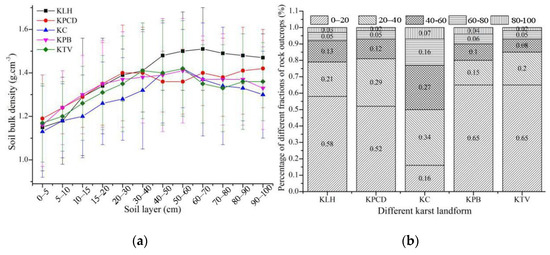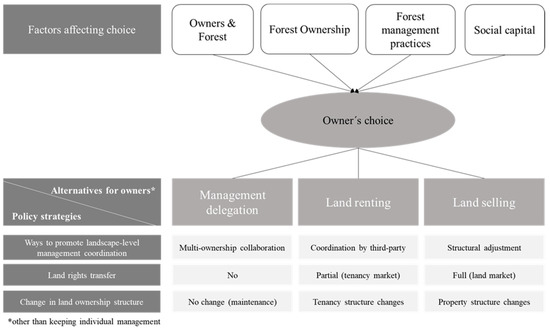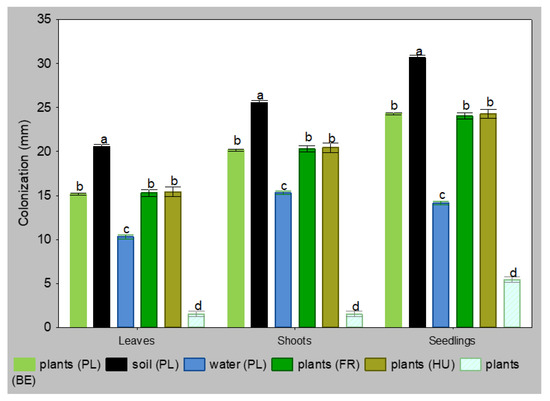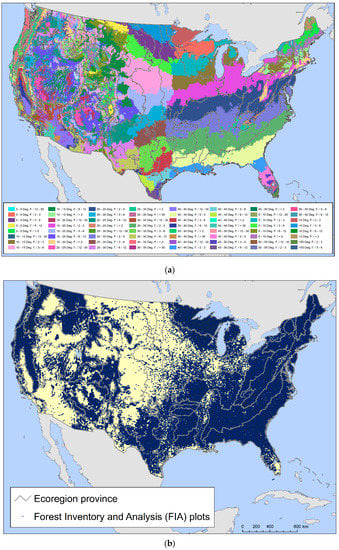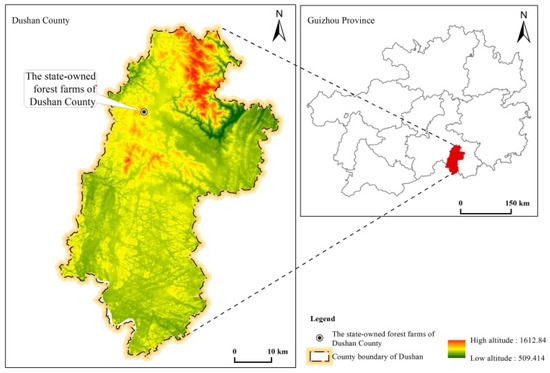To study the spatial distribution characteristics of soil organic carbon (SOC) coupled with rocky desertification, 1212 soil samples from 152 soil profiles were sampled from different karst landforms, including karst low hills/virgin forest (KLH) in Libo County, a karst peak-cluster depression (KPCD) in
[...] Read more.
To study the spatial distribution characteristics of soil organic carbon (SOC) coupled with rocky desertification, 1212 soil samples from 152 soil profiles were sampled from different karst landforms, including karst low hills/virgin forest (KLH) in Libo County, a karst peak-cluster depression (KPCD) in Xingyi County, a karst canyon (KC) in Guanling County, a karst plateau basin (KPB) in Puding County and a karst trough valley (KTV) in Yinjiang County. The spatial distribution characteristics of the responses of SOC, SOC density (SOCD), rocky desertification and soil bulk density (SBD) to different influencing factors were analyzed. The relationships among SOC, SOCD, rocky desertification and SBD were analyzed using Pearson correlation analysis. The SOC storage capacity was characterized by using SOCD, and then the SOC storage capacity in different evolution stages of karst landforms was assessed. The SOC contents of KLH, KPCD, KC, KPB and KTV ranged from 6.16 to 38.20 g·kg
−1, 7.42 to 27.08 g·kg
−1, 6.28 to 35.17 g·kg
−1, 4.62 to 23.79 g·kg
−1 and 5.24 to 37.85 g·kg
−1, respectively, and their average SOCD values (0–100 cm) were 7.37, 10.79, 7.06, 8.51 and 7.84 kg·m
−2, respectively. The karst landforms as ordered by SOC storage capacity were KPCD > KPB > KLH > KTV > KC. The SOC content was negatively correlated with the SBD; light rocky desertification may lead to SOC accumulation. The rocky desertification degree and SBD were closely associated with slope position and gradient. Rocky desertification first increased, then decreased from mountain foot to summit, and increased with increasing slope gradient. However, the SBD decreased from mountain foot to summit and with increasing slope gradient. The SOC contents on the northern aspect of the mountains were generally higher than the other aspects. In summary, rock outcrops controlled the SOC contents in the studied regions. The slope position, gradient and aspect influenced the composition and distribution of vegetation, which influenced the evolution of rocky desertification. Therefore, these factors indirectly affected the SOC content. Additionally, the SOCD decreased with increasing rocky desertification. During the different evolution stages of karst landforms, the SOC storage capacity first decreases, then increases.
Full article

